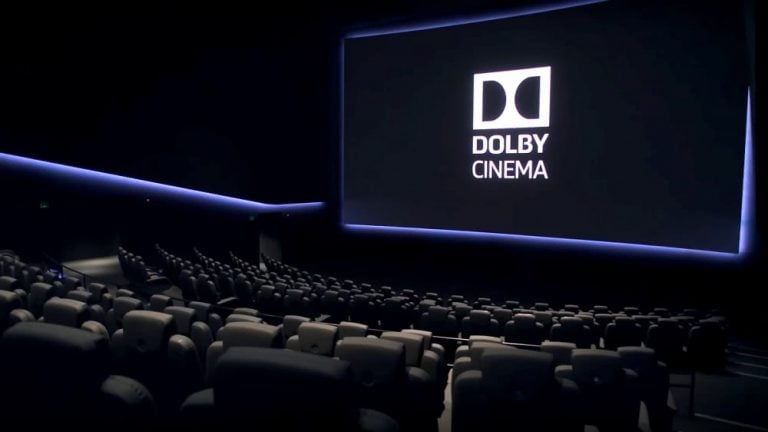This article was created in conjunction with Yamaha, the longest-standing and largest sound company in the world.
The screen is red. All you can hear is this odd rumbling; a kind of strange electronic echo, punctuated here and there by reverb-heavy drum blasts as abrupt and startling as the slash of a butcher’s knife. Slowly, out of this primordial soup of noise, something begins to emerge; something resembling music.
You say ‘resembling’, because although there’s definitely flashes in the soundtrack that feel oddly familiar – maybe if you’re a classical music snob, you know parts have been lifted from Henry Purcell’s ‘Music For The Funeral Of Queen Mary’ – there’s also this distinct alien rasp to the melody. It sounds like music beamed at you from another planet.
This is how A Clockwork Orange starts; not with a bang, but with a detuned, crackly warble. Audiences in 1971 had never heard anything like it, in no small part because the distressing cult classic was the first film to be released with Dolby Sound Reduction, a cutting edge technology that reduced background hiss and made sounds crisper and clearer than ever before. Dolby Sound Reduction wasn’t just some nerdy development for tech heads then – it was a tool that Stanley Kubrick utilised with all the sheer blunt force of a sledgehammer.
Watch the opening to A Clockwork Orange here:
Dolby has long been that kind of company, a complex, multinational conclave of whizzes who open up new worlds for filmmakers and musicians alike, and has spent years collaborating with companies like Yamaha. A British-American company founded by Mr. Ray Dolby in 1965, the business was conceived as a way of solving a very simple problem – namely the sound quality of early tape recorders, which, for want of a better word, was distinctly lacking. Crude instruments that they were, recorders produced tracks that were marred by constant, inescapable background hisses and crackles, noises as disquieting as a slowly-spreading headache.
The Beginnings Of Dolby
It was Dolby himself who developed the technology to reduce the hiss, producing the famous, threateningly bulky Dolby A machine. Though initially priced at £700 pounds – that would be almost $20,000 today – Dolby worked hard at reducing the cost of the technology. He knew that no development is revolutionary unless it is truly accessible, and had limited interest in making and marketing a machine that could only be purchased by music studios, or the wealthy elite. He wanted to transform sound quality for all, not just for the rich and powerful.
Thus, two years later in 1978, Dolby dropped the Dolby B machine, a compact filter that could be fitted into a range of household recorders. And it was, en masse – as The Independent notes, by the late ’70s, Dolby was the norm in devices sold across the country.
Two years later, Dolby dropped the Dolby B machine, a compact filter that could be fitted into a range of recorders.
The success of the device gave Dolby the momentum they needed to turn their attention to the cinema. Luckily, the boom in American film-making tied in perfectly with the technological developments Dolby were cracking by the day, and by 1977, the company had mastered stereo sound. ’77 also just so happened to be the year that a little space opera from a fresh-faced 33-year-old named George Lucas was ready to be released: that year, Star Wars was the first film to play with Dolby Stereo Sound.
With the advent of stereo sound, films became more immersive and engaging than ever before: it’s hard to imagine the blaring horns of John Williams’ impossibly famous Star Wars theme would have sounded half as impressive playing out of the speakers cinemas were fitted with before Dolby changed the game. Suddenly, audiences found themselves buffered by sound – enveloped by it. The cinema experience was forever changed.
Watch a retro Dolby advert here:
https://www.youtube.com/watch?v=aKkRgxNzhII
Still, for many people, Dolby are most famous for their adverts – those ten-second clips of glass balls dropping on an alien landscapes, filled to the brim as they are with the rich sounds of birds’ wings flapping; with waves crashing.
That strange, half-anonymity seems to suit the company perfectly fine. Despite winning Oscars, Emmys, and countless other plaudits, Dolby has never drawn excessive attention to itself. Yamaha, the longest-standing and largest sound company in the world, utilises Dolby technology; so does pretty much every cinema on the planet. No. Dolby doesn’t need to scream its successes from the rooftops. It can just go about doing what it has done for over 50 years: subtly and insistently changing the very way we watch movies and listen to music.
For more tech nostalgia, read our thoughts on the first ever banner ad here.


































